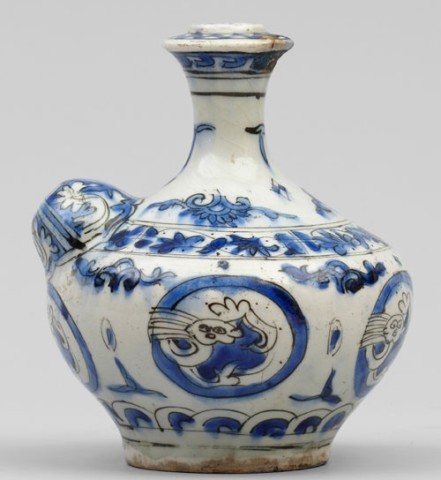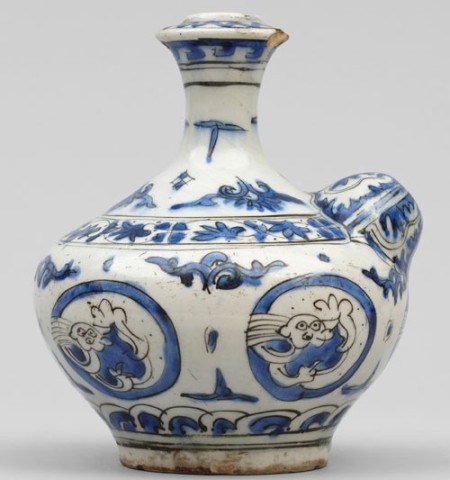Of squat baluster shape, moulded flanged mouth-rim and globular mammary spout, copying a Chinese original and painted in underglaze cobalt blue and manganese black with on the body five rounded panels containing stylized animals, divided by scrolls, a continuous floral border around the shoulder, further stylized scroll-work, small squares and motifs decorated on the neck, bands on top and below the flattened flanged rim, the spout with floral motifs in white on a blue ground, a lappet border around the foot, the slightly recessed base glazed and painted with a symbol.
Literature
Two examples in the same shape as our kendi and copying the Chinese style are in the Victoria and Albert Museum, registration number C.1958-1910 and 998-1876, here they discuss the ancestry and the use of this type of vessel: "By the 1620's, Iranian potters were producing convincing copies of the Chinese porcelain imports flooding into Iran since the 1580's. The challenge was to produce well-painted Kraak-style designs on thinly walled vessels. Iranian potters invented a technique later copied by the Dutch of outlining their designs with black manganese to create the crisp detail of the Chinese originals."
The form of the kendi derives from a type of South East Asian drinking vessel. Chinese kendis were exported to the Middle East where they were used as hookah bases, the Iranian potters then copied and adapted the shape to make vessels like this one.




